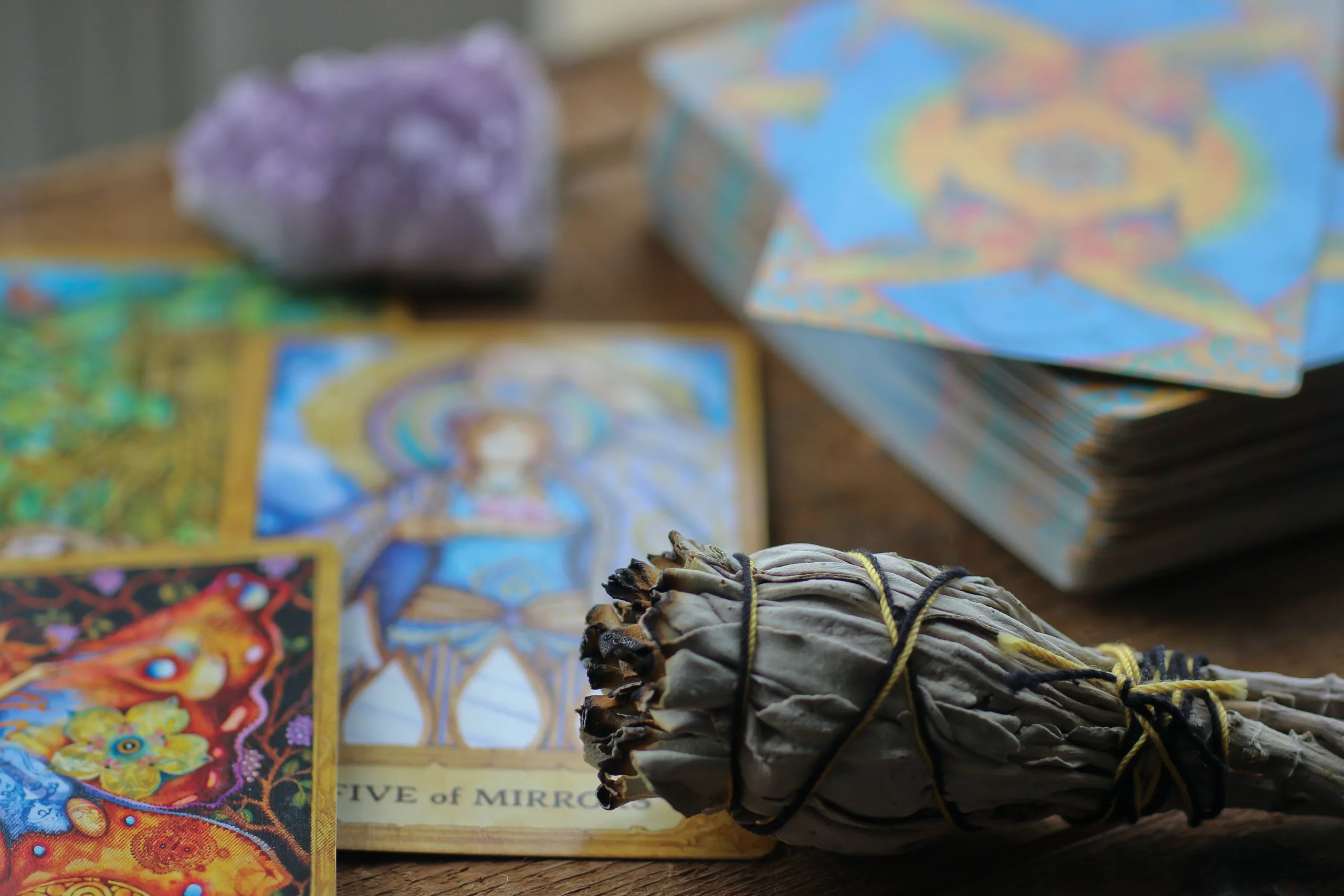What Does the Bottom of The Deck Mean in Tarot?
Introduction
The world of tarot is symbolic, profound, and endlessly fascinating, enriched with layers of hidden insights and intricacies. One such element frequently generating curiosity is the bottom of the deck tarot card. Illustrating a nuanced viewpoint within the complex tapestry of tarot readings, questions often arise: What does the bottom of the deck mean in tarot? What is its significance in the grander scheme of a reading?
 Image by Kayla Maurais. Source: Unsplash.
Image by Kayla Maurais. Source: Unsplash.
Significance of Card Positions in Tarot
Tarot involves more than just gleaning meanings from individual cards. It’s about interpreting cards within a spectrum of layered contexts, enveloped by numerous aspects such as question asked, reader’s intuition, type of spread utilized, and unique positions that cards occupy. Among these positions, one often overlooked yet potent place is the bottom of the deck.
Unpacking the Concept of the ‘Bottom of the Deck’
In traditional tarot reading practices, the ‘bottom of the deck’ card—often termed as ‘base card’, ‘underlying card’, or even ‘shadow card’—and its meaning has been a subject of varied interpretations and philosophical thought. It is generally thought to reveal hidden influences, unconscious thoughts or underlying themes unconsciously influencing the query at hand.
The Role of Intuition in Tarot Reading
Just as important as understanding card positions is trusting one’s intuition during a tarot reading. It can be an intuitive nudge to consider the bottom card or sometimes an inner calling that insists on paying heed to what rests beneath. This intuitive realm adds richness, depth, and unique direction in discovering what the bottom deck genuinely signifies for each reading.
Historical Interpretations
Understanding Tradition: The Bottom Card in Historic Tarot Practices
Historically, interpretation methods fluctuated as widely as today, painting this canvas with a broad stroke of varied schools of thought. While some traditions attached no consequence to the bottom card, others considered it a significant vehicle of secret messages and predictions.
Influence on Contemporary Tarot Practices
Fast forward to the present, and the echoes of the past still reverberate in contemporary tarot practices. Modern interpreters buoyed by the advent of fresh perspectives, also incorporate intuition and personal perception into traditional tenets—leading to a diverse range of practices, with no ‘one size fits all’ bottom deck interpretation.
Symbolic Meaning
Deep-Rooted Issues or Hidden Forces at Play
In a practical sense, the bottom card can signify deep-rooted forces that may elude awareness. These could be unconscious patterns, hidden fears, unseen obstacles, or even latent potential waiting to manifest itself. It’s the pulse beneath the surface that subtly but firmly directs life’s flow.
Relating Personal Context to the Bottom Of The Deck
Interpreting the bottom card shouldn’t deviate from the context of personal experiences and circumstances. Synchronizing this interpretation with individual context lends a nuanced understanding of what’s operating beneath the surface, allowing seekers to make sense of this hidden, bottom layer in their unique life tapestry.
Interpretation Techniques for ‘Bottom Card’
Use in Different Types of Tarot Spread
The meaning and usage of the bottom card can vary depending on the type of spread employed. Some curated spreads explicitly incorporate this card; others may leave its interpretation up to reader’s discretion. Understanding how different spreads employ this element can offer valuable insights towards its interpretation.
Situational Example and Interpretations (Case Studies)
Practical instances and interpretations can truly illuminate a concept. Suppose in a reading centered around career progress, the bottom card reveals ‘The Tower’—signifying drastic change. It might indicate an impending upheaval job-wise that one might be unaware of—perhaps a shift, end, or a significant change coming your way.
Conclusion
Final Thoughts on Incorporating The Bottom Deck into a Tarot Practice
In summary, the bottom of the deck in tarot brings an added dimension to readings and personal perception. By shedding light on what lies beneath, readers and seekers alike stand to gain a more holistic view of their circumstances—a deeper understanding that could guide them to make enlightened decisions moving forward.
Frequently Asked Questions (FAQs)
Q1: Why is the bottom card sometimes called "Shadow Card" in a tarot reading?
A: The term ‘shadow card’ comes from the Jungian concept of ‘The Shadow’: the unconscious aspect of personality which the conscious self doesn’t identify with. The ‘shadow card’ metaphorically uncovers this unconscious domain, mirroring hidden influences playing out in the shadows of our psyche.
Q2: Can anyone learn to incorporate bottom deck interpretation into their tarot readings?
A: Absolutely! Tarot is a deeply personal and intuitive practice. With time, study, intuition, and practice, anyone can learn to incorporate and interpret the bottom card in their readings.
Q3: What’s a good approach when you get a difficult or intense card at the bottom of the deck?
A: When faced with challenging or intense cards, keep in mind that these energies can be channeled positively too. It’s an indication that something needs attention or understanding. Confronting it head-on with an open heart and mind can lead to true growth and transformation.
Q4: How does shuffling affect which card ends up at the bottom?
A: Tarot practitioners often liken shuffling to mixing energies—your energy merging with that of the cards. Hence, which card ends up at the bottom deck could be influenced by this energy interplay during shuffling, with the resulting card revealing what’s in need of attention under the surface.